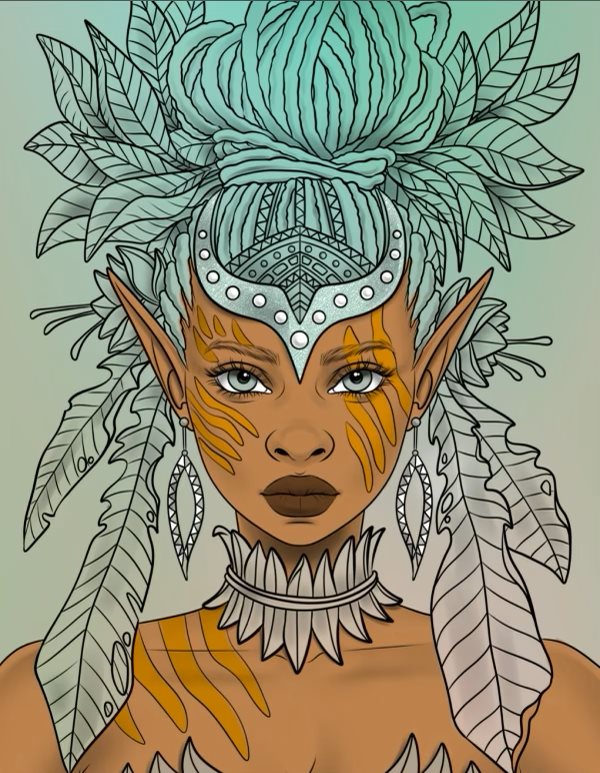The Pursuit of Art and Higher Education

Why don’t more students pursue art in higher education?
For many students, art is more of an outlet rather than profession, and in a world where student’s lives revolve around academics, art gets sidelined. For our research, I interviewed Liam, an international studies & economics major. In his free time, Liam sometimes enjoys partaking in creative writing. When asked why he no longer pursues art, Liam described how, “it almost feels like an inefficient use of my time. Which is a sort of sad thing to say, because I think, maybe it would be good for my wellbeing to participate in more creative outlets.”
“My mom was first gen” said Samson, a non-fine arts participant who is majoring in political science. “All Mexican family, none of them went to college, all of them working… she [Samson’s mom] was the one who made it out of her family.” As a result, Samson has been encouraged by their family to continue building up a secure foundation for financial success. “And that doesn’t usually include the arts” says Samson.
Kiki, another non-fine arts participant, also described how art is helpful for people who benefit from learning hands-on. Kiki described how, “touching and seeing where things go helps me connect it better in my head.” When asked why she doesn’t pursue more creative outlets, Kiki said the financial pressure of being in school does not leave room for creativity. “My money is going in DU, DU housing, DU meals, DU books, DU courses. It’s just DU. So I have to save for that… I can’t take part of my savings to go get this specific paint or a proper paintbrush for canvases or the perfect knitting needles.”
The financial and academic pressure of the arts also impacts students’ desires to participate in art. “I’m less creative in college,” described Liam. “I have less time to write… it’s also the curse of you end up writing for classes, and so then, going to write something creatively, you end up associating with the writing you have to do for class work, and it kills the desire to go write.”
Even students who did choose the fine-arts route described many of the same barriers. Maddie Jade, who is a studio arts major and enjoys creating 2D art, shared, “I definitely have some extended family members who are like ‘you’re going to college but you’re going for art. Like, why are you wasting a college degree?’”
If the financial and professional risk is high, why do students continue to participate in art?
We found that our non-fine arts participants still participated in a form of creative expression, even if it was not in school. Kiki’s favorite form of creative expression is to listen to music, dance and watch movies, while Liam enjoys writing or making spreadsheets. Participants agreed that having a creative outlet helped them cope with difficult emotions, including the stress of university life. Leah expressed her sentiment: “It’s a way to express myself…to deal with a lot of emotions that I wouldn’t deal with in everyday life. Or if I do deal with them in life, it’s a type of outlet to express them and explore them in different ways.”
Some participants described that they do not participate in art at school for personal reasons. “I don’t want to sound messed up, but like my art is not to share. Like I paint for me,” said Kiki. Additionally, Liam described how art to him “is inherently unstructured.” As a student whose life revolves around academics, he described how art functions to help him let go of intensive systems of structure. Liam described that participating in art in school, “it ends up just feeling like any other class that I’m taking.”
Cami, another non-fine arts student, is a finance major who also engages in music composition and plays the drums and piano. She described how creative expression is beneficial for students because it helps them process what they are feeling or also “reflect on what’s going on in the world at that time”. This demonstrates that creative expression not only helps students process their emotions, but also helps them learn more, much like Kiki described.
A common theme we found in our interviews is that students go to school for personal “fulfilment.” This can manifest as financial fulfilment (Samson), creative fulfillment (Leah), academic fulfillment (Kiki), or for the simple sense of achieving a purpose (Maddie Jade). Leah’s dedication to musical performance exemplifies this, as she embraces her passion regardless of her role: “that little fire in me that loves it with all my heart and knows that… I don’t care if I’m the lead or in the chorus or doing the lights. I just always want to be here no matter what.”
Overall, our findings reveal that creative outlets offer avenues for self-discovery, emotional exploration and experiential learning in ways that traditional academics do not. While students are encouraged to pursue fulfilment in the form of high-paying careers and academia, it is evident that fulfillment lies beyond solely those conventional realms.
Check out the other posts in this series:
- Creative Expression and Well-Being Among Undergraduate Students
- Finding Balance Within Creative Expression and Life as a Student
This blog series is a summary of qualitative research study, Creative Expression and Well-Being Among Undergraduate Students, conducted at the University of Denver by undergraduate students Sofia Pineda-Velez, Jasmin Storer, Grace Chavez and Sam Searfoss through the Leadership department with the Colorado Women’s College Leadership Scholars. The study investigated arts-based education in the university setting through student interviews and the relationship between creative expression and mental well-being.



